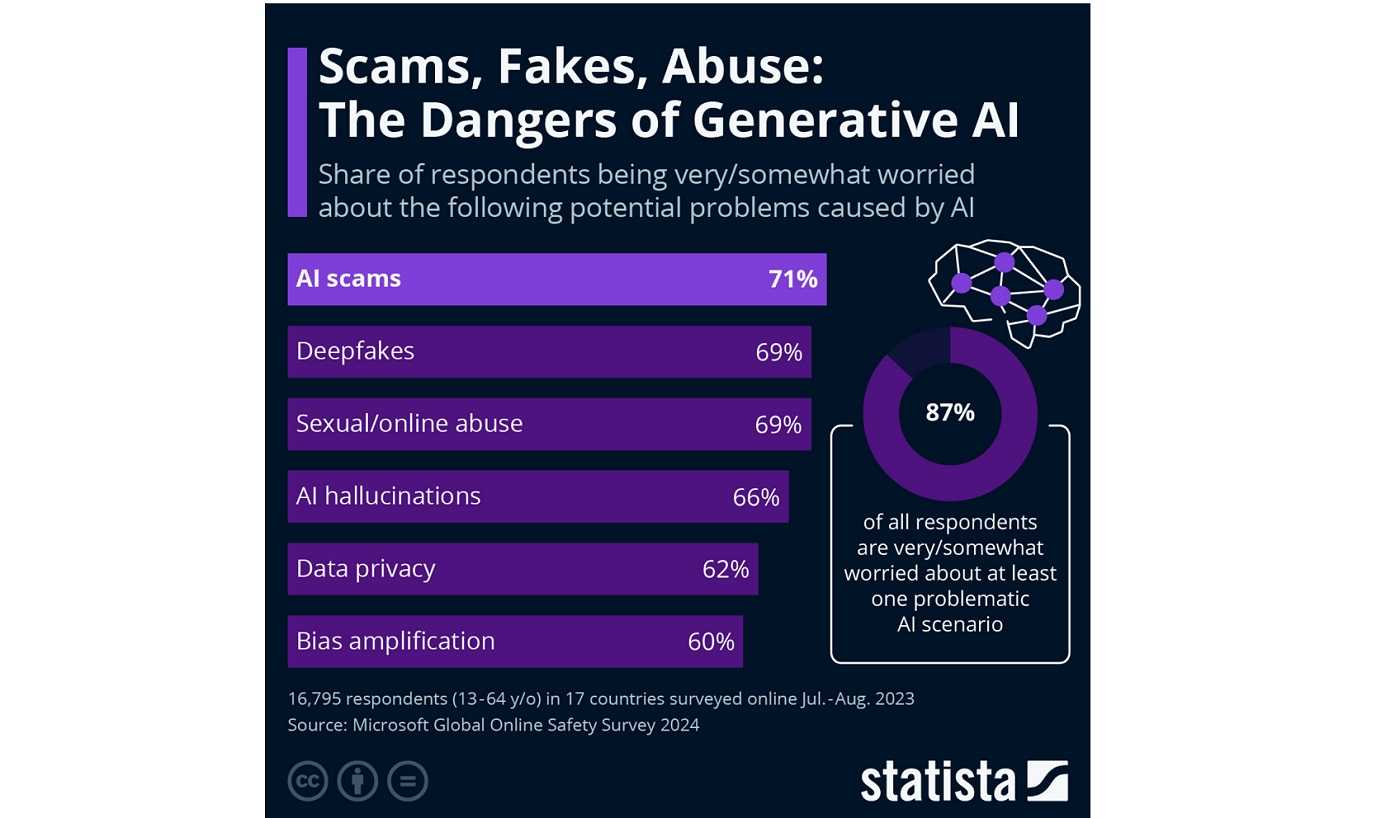As cybercrime is known to do, attacks trend over time, creating new and improved assaults. Fighting back against trending fraud attacks requires everyone, including organization leaders and those overseeing security to be prepared for the latest threats. And with artificial intelligence (AI) now playing a significant role with these crimes, awareness can be an invaluable fraud prevention tool.
AI-Generated Fraud
AI-generated deepfakes make “authorized fraud” a must know of trending crimes. AI-generated fraud happens when cybercriminals make you believe what you read, see or hear is 100% legitimate. Research shows deepfake fraud in North America increased by 1,740% over one year and it continues to trend.
With the help of AI, deepfakes impersonate someone with digitally altered images, audio, or video to orchestrate identity fraud. Whether it’s C-suite members, staff, clients, or contractors, deepfake videos and voice clones are easy to make. As a result, verifying an identity, especially one involving a financial transaction, is fundamental fraud prevention.

Fraud Crime Rings
Like much of organized crime, fraud is no different. Cybercrime networks specializing in fraud are an emerging trend, and no organization is too big or too small to be attacked. Cyber-fraud networks are everywhere around the globe, with many acting as nation-state actors sponsored by adversaries like Russia, North Korea, and China.
Phishing emails orchestrate 91% of all cyberattacks, with many starting and ending with fraud. Whether it’s socially engineered phishing attacks or “whaling” targeting higher-ups in the organization, fraud crime rings are actively involved. How the attacks unfold within these dedicated groups is up to them.
Fending-Off Trending Fraud
For individuals, keeping an eye out for attempting phishing is always the best bet. It's getting more difficult to detect, so staying on top of trends such as video and voice impersonation scams is key.
Keeping clear of trending fraud attacks takes commitment from organization leaders and those providing cybersecurity. A comprehensive approach is needed, including training staff to identify and report threats, implementing security protocols, and regularly educating employees about trending attacks. This education should cover new hires to C-suite execs since no one is safe from being targeted by fraudsters. Also, using AI-integrated machine learning algorithms to identify unusual activity can also help prevent fraud.
Fraud targets financial accounts for both individuals and organizations. In addition to financial loss to a company is reputational harm. And that is very difficult to quantify. Not all companies survive this one-two punch and trending attacks are a big part of the problem.